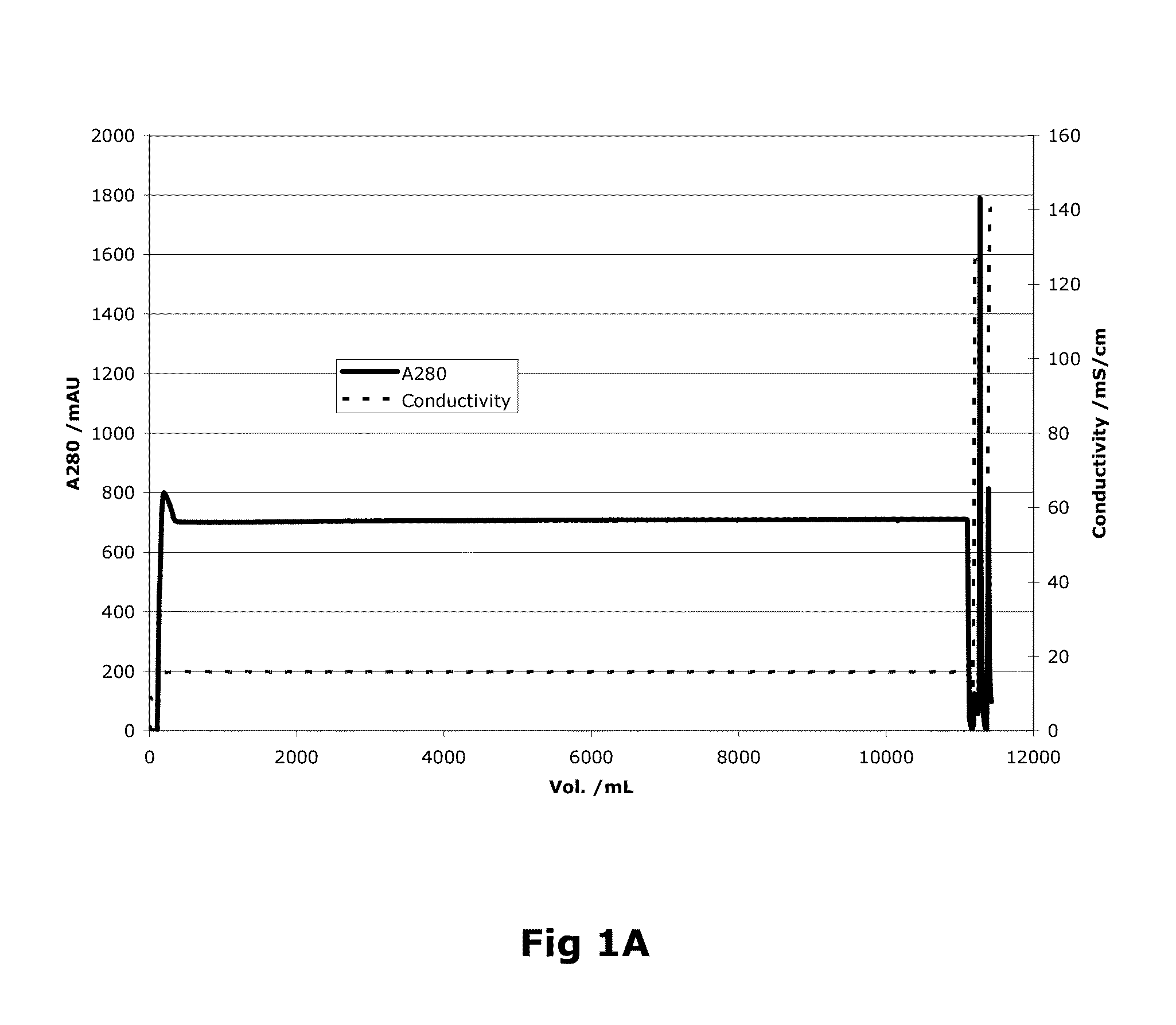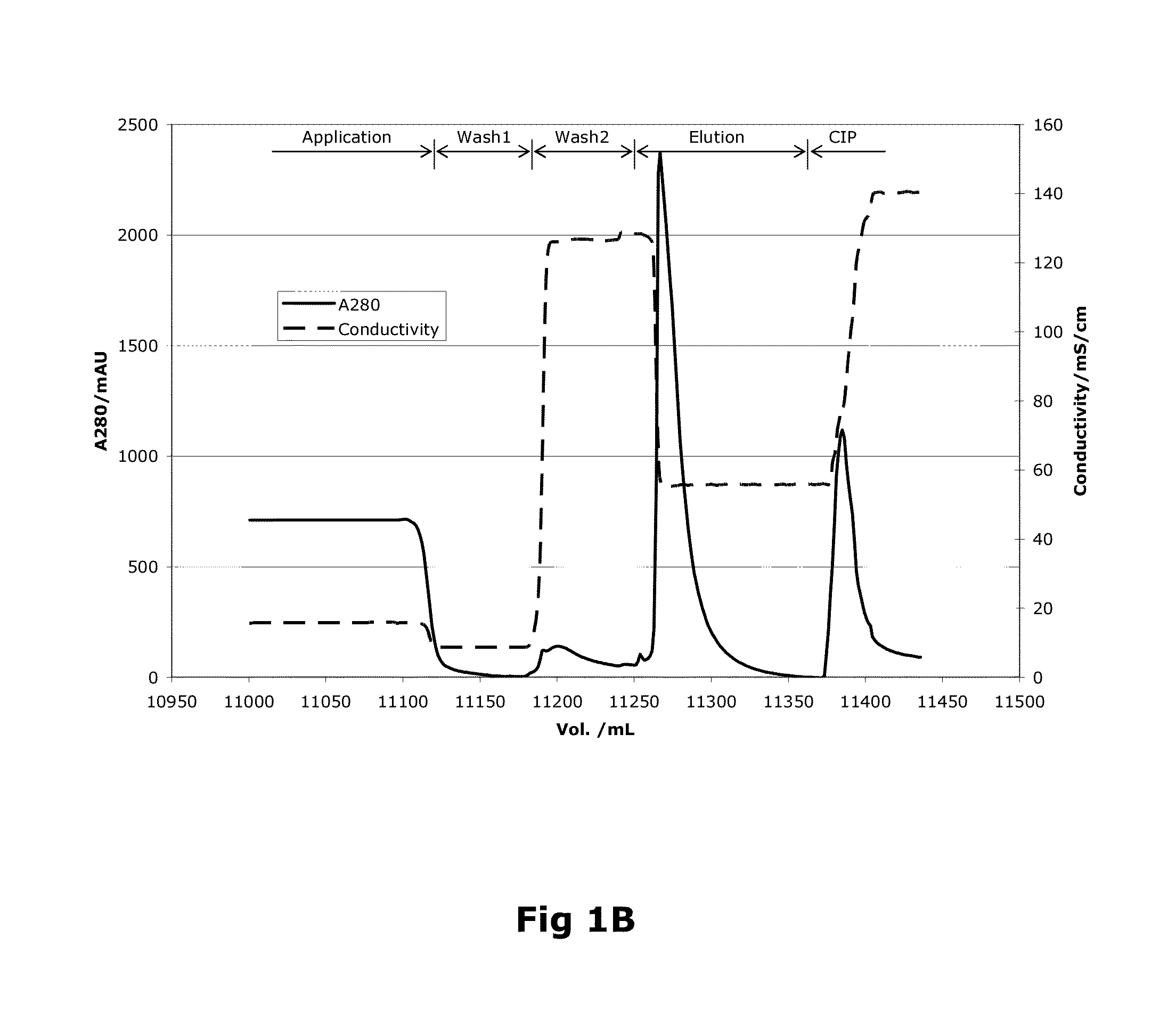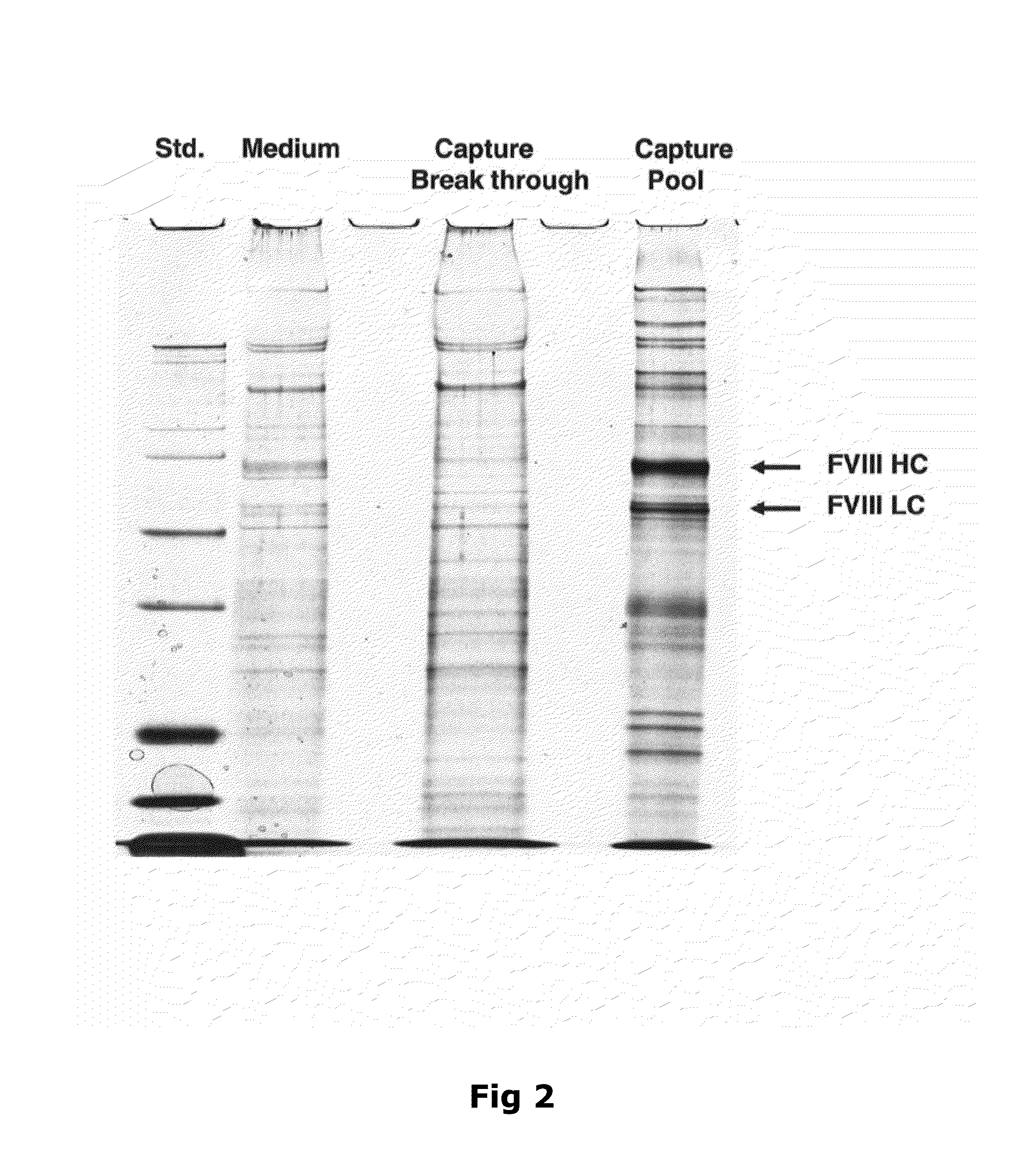Purification of factor VIII using a mixed-mode or multimodal resin
a multi-modal resin and factor viii technology, applied in the field of purification of recombinant proteins, can solve the problems of aqueous source materials in which the polypeptides are found, suffer from certain levels of contamination, and the antigenicity of ultimate use, and achieve the effect of fast and efficient purification, without loss of protein activity, and efficient purification
- Summary
- Abstract
- Description
- Claims
- Application Information
AI Technical Summary
Benefits of technology
Problems solved by technology
Method used
Image
Examples
example 1
[0090]Recombinant production of Factor VIII is well known in the art; reference can, for example, be made to U.S. Pat. No. 5,633,150 (Genentech) and U.S. Pat. No. 7,138,505 (Novo Nordisk / Novartis).
[0091]The recombinant Factor VIII was expressed in CHO-cells in a commercially available serum free media. The protein harvest from the fermentation was further used for the purification.
example 2
[0092]Purification of Recombinant Factor VIII
[0093]Capto MMC (GE Healthcare, Uppsala, Sweden) resin was used for the purification of the recombinant protein. The column was packed with a bed height of 12 cm and 24 ml bed volume.
[0094]As a first step, the purification process involved loading wherein the harvest from the fermentation was applied onto the column. The column volume (CV) of loading was 450 CV (Table 1). This was followed by passing the column with equilibration buffer consisting of 20 mM imidazole, 10 mM CaCl2, 0.02% (v / v) Tween 80 and 50 mM NaCl. The pH of the equilibration buffer is adjusted to 7.5. The column is further washed with wash buffer (20 mM imidazole, 10 mM CaCl2, 0.02% (v / v) Tween 80 and 1.5M NaCl) at a pH equivalent to the equilibration buffer, i.e. 7.5. The column volumes of equilibration and washing steps were 3 CV (Table 1).
[0095]
TABLE 1Column Volumes (CV) used invarious steps of Factor VIII purificationStepBufferColumn VolumeEquilibrationEquilibration...
example 3
[0099]Activity Assay
[0100]The activity of purified Factor VIII was measured using a modification of the CoaTest® SP assay:
[0101]Reagents and buffer stock solution from the CoaTest® SP kit were used. All reagents were allowed to reach room temperature before initiation of experiment. Samples were diluted in CoaTest assay buffer (50 mM Tris, 150 mM NaCl, 1% BSA, pH 7.3, with preservative) to approximately 2 mU / ml. The reference plasma was diluted in assay buffer to 5-0.5 mU / ml. The samples were diluted in assay buffer to 12 and 9 U / ml, then 10-fold in FVIII-deficient plasma with VWF (Dade Behring), and finally 10- and 20-fold in CoaTest® assay buffer (resulting in 4 dilutions per sample). Fifty μl of samples, standards, and buffer negative control were added to 96-well microtiter plates (Nunc) in duplicates. The factor IXa / factor X reagent, the phospholipid reagent and CaCl2 from the CoaTest® SP kit were mixed 5:1:3 (vol:vol:vol) and 75 μl of this added to the wells. After 15 min incu...
PUM
| Property | Measurement | Unit |
|---|---|---|
| pH | aaaaa | aaaaa |
| molecular mass | aaaaa | aaaaa |
| molecular mass | aaaaa | aaaaa |
Abstract
Description
Claims
Application Information
 Login to View More
Login to View More - R&D
- Intellectual Property
- Life Sciences
- Materials
- Tech Scout
- Unparalleled Data Quality
- Higher Quality Content
- 60% Fewer Hallucinations
Browse by: Latest US Patents, China's latest patents, Technical Efficacy Thesaurus, Application Domain, Technology Topic, Popular Technical Reports.
© 2025 PatSnap. All rights reserved.Legal|Privacy policy|Modern Slavery Act Transparency Statement|Sitemap|About US| Contact US: help@patsnap.com



